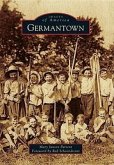Long before the city of Upper Sandusky was established as the seat of Wyandot County in 1843, the fertile farming and hunting land along the Sandusky River was a village of the Wyandotte Indian Nation. African American Methodist minister John Stewart established a mission here to serve the Wyandottes, creating a model of peaceful living between pioneers and Native Americans, until the Wyandottes were moved to Indian Territory by the federal government. Upper Sandusky shows the growth of a Midwest town from the end of the Civil War through World War II using historic photographs of people, organizations, and landmarks. From local bands to buildings lost in fires, Upper Sandusky documents how the town has changed and how the strong bonds of family, adversity, and triumph keep the community growing together.








